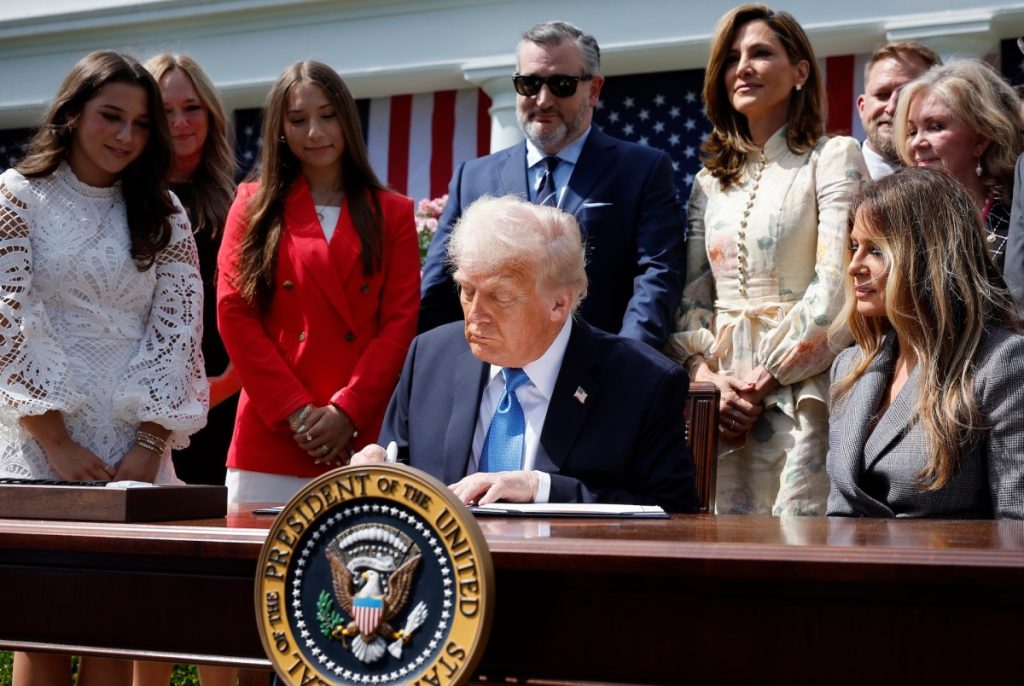The recently enacted Take It Down Act has sparked controversy among privacy and digital rights advocates, despite its intention to tackle two pressing issues: nonconsensual explicit images and AI-generated deepfakes. The law, which makes it illegal to publish any such content without consent, mandates that online platforms act swiftly—removing offending material within 48 hours of receiving a takedown request from victims or their representatives. While many hail this legislation as a much-needed victory for victims of revenge porn, experts warn that the law’s imprecise language and the short compliance window could lead to unintended consequences, including censorship and violations of free speech.
Understanding the Take It Down Act
The Take It Down Act aims to protect individuals by criminalizing the publication of nonconsensual intimate imagery, regardless of whether the content is real or artificially created. However, the broad definitions and lack of stringent verification processes for takedown requests raise concerns about potential abuse of the law. Victims need only provide a signature—either physical or electronic—when filing a complaint, with no requirement for photo identification or other substantial verification. While this approach does lower barriers for victims seeking justice, it also opens the door for misuse by individuals trying to suppress legitimate content.
India McKinney, director of federal affairs at the Electronic Frontier Foundation, expressed her apprehensions, stating, “Content moderation at scale is widely problematic, and always ends up with important and necessary speech being censored.” As such, the challenge lies in ensuring the law effectively protects victims without infringing upon the rights and expressions of others.
The Compliance Challenge for Platforms
Under the new law, online platforms have one year to establish procedures for the rapid removal of nonconsensual intimate imagery (NCII). Importantly, the law holds platforms liable if they fail to comply with takedown requests within the stipulated 48-hour window. This pressure to act quickly may lead platforms to remove content hastily, often without adequate investigation into whether the material actually qualifies as NCII or is simply protected speech. In this environment, many platforms may default to removing content rather than risk penalties, resulting in legitimate speech being silenced.
- Platforms like Snapchat and Meta have publicly endorsed the legislation, though there are questions about how they will verify the identity of those requesting takedowns.
- Mastodon, a decentralized social network, indicated it would likely favor removing content if victim verification proves complex.
The chilling effect of the 48-hour deadline is particularly pronounced for smaller and decentralized platforms like Mastodon, Bluesky, and Pixelfed. These networks, often operated independently by nonprofits or individuals, could face significant hurdles in navigating the law’s requirements. Should the Federal Trade Commission (FTC) deem a platform to be engaging in “unfair or deceptive acts” due to inadequate compliance, even non-commercial entities could be impacted.
Consequences for Content Moderation and Free Speech
As platforms grapple with the implementation of the Take It Down Act, proactive content moderation may become the norm. Online services might use AI-driven systems to filter and monitor user-generated content prior to its publication to minimize the risk of exposure to NCII. This technology is already in use; for example, Hive, an AI content detection startup, collaborates with various platforms, including Reddit and Giphy, to identify deepfakes and child sexual abuse materials (CSAM).
Kevin Guo, CEO of Hive, remarked, “It’ll help solve some pretty important problems and compel these platforms to adopt solutions more proactively.” Despite the intentions behind such measures, there are growing concerns over how this level of scrutiny might extend to private messages, especially in encrypted communications where user privacy should be safeguarded. As McKinney pointed out, the law requires platforms to “make reasonable efforts to prevent the reupload” of nonconsensual images, which could incentivize intrusive monitoring practices—even in encrypted settings like WhatsApp or Signal.
The Implications of Political Influence
The Take It Down Act has also garnered attention within the political arena. During a recent address, President Trump celebrated the legislation, mentioning that he himself would use it to combat online negativity. Critics are wary of such statements, considering Trump’s history of retaliating against unfavorable portrayals in the media. As noted by McKinney, this trend is troubling, especially in a political climate where calls for stricter content moderation come from various quarters, including those seeking to suppress specific narratives like critical race theory or LGBTQ+ content.
The Cyber Civil Rights Initiative, a nonprofit dedicated to combating revenge porn, voiced similar concerns, emphasizing the potential for ideological bias in the enforcement of this law. As platforms gear up to comply, the interplay between protecting victims and upholding free speech rights will undoubtedly be a contentious battleground.
Quick Reference Table
| Aspect | Details |
|---|---|
| Law Name | Take It Down Act |
| Takedown Window | 48 hours |
| Verification Requirement | Signature only |
| Platforms Affected | All online platforms |
| Potential Impact | Censorship of legitimate content |
| Key Advocate | India McKinney, EFF |
The Take It Down Act highlights a critical intersection of technology, law, and human rights. While it aims to protect victims, the fallout from its implementation raises pressing questions about free speech, the efficacy of content moderation, and the impact of political influence on digital rights.

